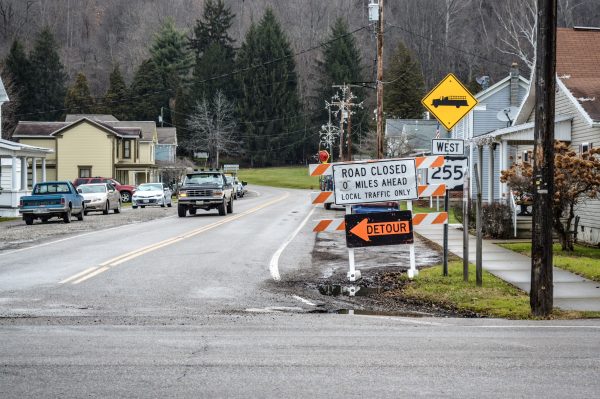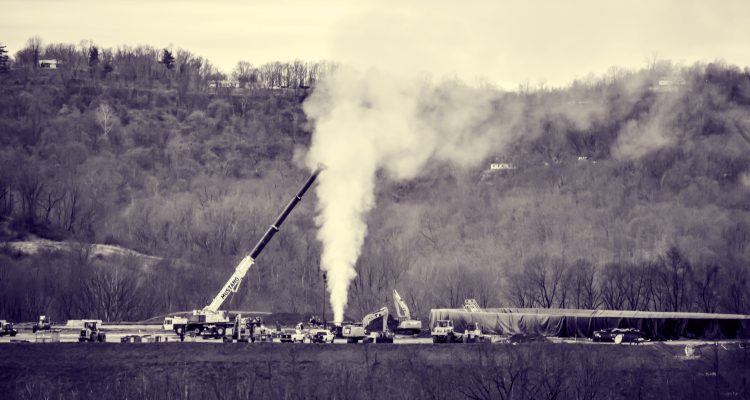Photographs and Story By Steve Novotney
Weelunk.com
It was supposed to be a good day in Sardis, Ohio, and that is because December 13 had been designated as “Connection Day” for Triad Hunter’s Stalder 3UH well pad in Monroe County.
Crews were at the well along Sardis Ridge Road (Ohio 255), located high above this community of 560 citizens. The workers were set to prepare this Utica Shale well for production after it was drilled, fracked, and capped in November 2013. Once connected to the pipeline system that had been installed for more than a year, those who agreed to lease agreements with parent company Magnum Hunter Resources Corp. would finally begin to collect thousands of dollars in royalty payments.
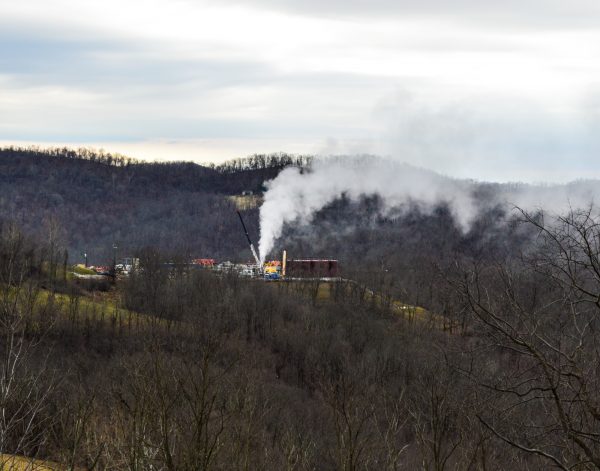
However, according to the company’s website, when the employees removed the cap, the pressure within the well was too great to control. The natural gas – likely from 10,000 feet below the surface – spewed out, and it continued for more than 10 days before representatives of Wild Well Control were finally able to recap it to salvage future production.
“Despite numerous precautionary measures taken in connection with the temporary plugging and abandonment operation, the well began to flow uncontrollably while recommencing production operations,” the company stated in a press release. “Triad Hunter personnel were removing the well’s night cap flange when a pressure disruption occurred. They attempted to bolt back down this equipment but were not able to safely do so prior to natural gas flowback.”
In the meantime, a “no-fly zone” was established for the affected area, and all households within a 1.5-mile radius were ordered to evacuate, and that led to 28 families searching for overnight accommodations. Some stayed with family, and others lodged at hotels in Marietta, Ohio, located 40 miles south of Sardis. A “community shelter” also was set up in an elementary school that closed three years ago, and Phillip Keevert, director of the Monroe County Emergency Management Agency, established “a “command post” inside one of the county’s eight volunteer fire departments.
The impacted families, including the Heaters, the Reeds, the McPeeks, and 25 other households, were permitted to visit their homes during daytime, but were not allowed to remain overnight. Finally, two days before Christmas, emergency personnel lifted the restrictions.
In Ohio County, Chesapeake Energy has established 32 well pads thus far, and most of these locations have been drilled more than once.
“This is a situation that could become a reality anywhere a well is being drilled and fracked,” said Lou Vargo, the director of the Ohio County Emergency Management Agency. “For every well in Ohio County, there is an emergency plan in place, and the same is true in every county in our area where natural gas is being harvested. And this isn’t the first time evacuations have taken place, either.
“Anytime you’re dealing with a natural resource like natural gas, you have to realize the dangers involved,” he said. “If the people in Monroe County didn’t know this was possible, they sure do now. This entire valley knows it now.”
This was not the first emergency situation for Monroe County residents. In late June, a fire at the Eisenbarth well pad forced about 20 families to seek shelter for a day. The explosion at the Statoil North America well pad was caused by a mechanical malfunction in hydraulic tubing, according to company officials, and it was limited to equipment on the surface.
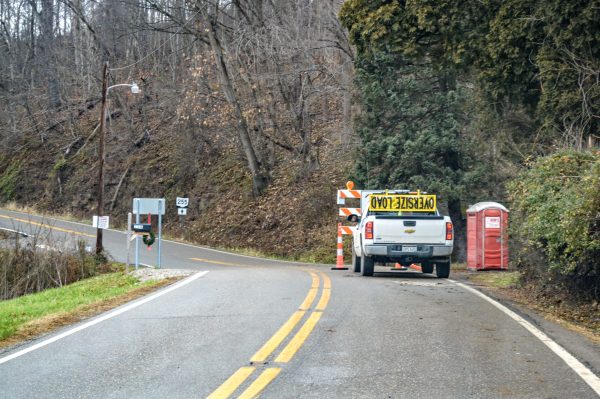
No injuries were reported, and 16 pump trucks and four “blender trucks” were destroyed. Pump trucks are used to frack the shale, and blender trucks are utilized to mix the fluids used in fracking. Hydraulic fracturing, or fracking, is a process that includes drilling and pumping a mixture of water, sand, and chemicals into the Earth to break up either the Marcellus or Utica shale plays and release the trapped oil and natural gas.
A significant fish kill did occur as a result of the fire, according to officials of the Ohio Environmental Protection Agency. Regulators counted roughly 70,000 dead fish, frogs, crayfish, and salamanders. Environmental Protection Agency documents state tests showed the presence of benzene, ethylbenzene, xylenes, toluene, and pyrene – all chemicals commonly used during well fracking.
“There is a ton of activity that’s taking place all along East Ohio and the northern panhandle of West Virginia,” said Matt Coffland, one of three Belmont County commissioners. “If there is any good news that comes out of this, it might be the fact we do not hear about these kinds of situations very often.
“It’s my opinion that the people in this valley are lucky to have these industries here right now because of the employment opportunities, because a lot of farmland is now being used again,” Coffland said. “It’s been good for the local economies, and that’s easy to see. But we have to take the bad along with the good, and when things like this happen anywhere in our valley, it’s very unfortunate.”
The Drive South
For decades the state highways along the Ohio River have been used by vehicles connected to the coal, steel, chemical and aluminum industries, and the same is true today for vehicles involving the natural gas and oil business.
The white pickup trucks, giant water carriers, tractor trailers hauling frack rigs, and nuclear imaging vehicles are commonly seen now traveling on W.Va. Route 2 and Ohio Route 7. What is new, though, along the 45-mile stretch that separates Wheeling from the Sardis community are the hillside scars from pipeline construction, newly cut roads that lead to well pads, and the campgrounds filled with oil and gas employees who have traveled to the Upper Ohio Valley from states like Arkansas, Louisiana, Texas, Oklahoma, and Alabama.
“There are fewer in this area now than there were a few years ago, and that’s because a lot of local residents are getting trained for the work,” explained Terry Langley, an organizer for Pipeliners Local 798 in Tulsa, Okla. “To get this industry started, the companies had to bring in employees that knew how to do the drilling, the fracking, and to build the pipelines, but since then there have been a lot of former steelworkers that have gotten jobs.
“And these industries aren’t going anywhere anytime soon; you can take my word for it,” Langley continued. “I know a lot of people thought this was going to be a flash in the pan, but that’s not how this works. There have been billions of dollars invested into this valley because of what is below our feet, and it’s going to be many, many years from now before this whole process runs its course.”
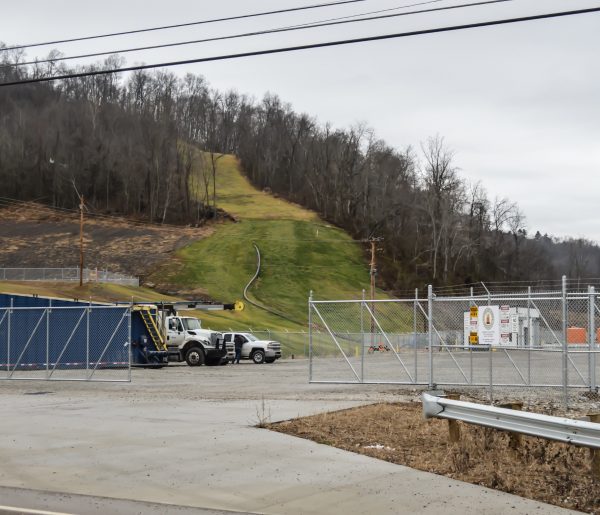
The Monroe County property that was once the home of Ormet Corp., an aluminum manufacturer that closed less than a year ago, has been purchased and transformed into the “Monroe County Energy Campus,” and storage yards for these industries are located along the river in all counties included in this gas and oil rush.
“There are a lot of the former steel plants that have been bought or leased by the gas and oil companies, and that’s got to be a good thing,” Langley said. “Look, I know there is a lot of concern, and I can understand why that concern is present. This is brand new to all the folks here in the valley. No one living here has ever experienced anything like this before.
“There’s a learning curve involved; there’s no doubt about that. There’s a learning curve for the residents, and there’s a learning curve for those working in the industry in this region because it’s never been done before. Not to this extent,” he continued. “Accidents do happen. They take place. But if you ask anyone who has ever worked in any industry, they will tell you that there were accidents there, too.”
Local and state lawmakers in Ohio and West Virginia are far from taking action similar to what the New York Governor Andrew Cuomo recently enacted within the borders of the country’s 11th state. Today, fracking is banned in the Empire State.
But in West Virginia and Ohio, local and state lawmakers are courting more development. Currently, there is a competition between the two states for “Cracker” plants – large factories that separate the natural gas from the liquids that are harvested.
“It’s all about employment and retaining our younger people instead of watching them to continue moving away for employment,” explained Belmont County Commissioner Mark Thomas. “Many of our young people have been moving away for the past few decades because of the changes that have taken place with the loss of manufacturing.
“We’ve all heard the stories about how easy it was for people coming out of high school that didn’t want to go to college, or couldn’t afford to,” he said. “All they had to do was go to work in the mine, at the plant, or at the mill, and that’s not the case today. But the gas and oil industries have presented a new opportunity for those who want to stay right here, and all they have to do is pass a drug test and want to work.
“We all see the traffic, and we all see the growth that is taking place in the counties where the drilling is taking place,” Thomas added. “It’s very busy, and the hotels are packed. The stores are busy, the gas stations are busy, the restaurants are busy, and the roads are busy.”
But “busy” does not describe Sardis, Ohio, on the Tuesday before Christmas. Detour signs speckled Ohio Route 7, a “ROAD CLOSED” sign was situated at the bottom of Sardis Ridge Road, and the lunch counter at Marv’s Diner was bare. No signs of life could be seen along the 2.5 miles of roadway leading up to the Stalder 3UH pad, but there was an eerie sound once the leaking well head came into sight.
That Deep, Steady WHOOOOSH
A guarded checkpoint was established at the bottom of this closed country road where a young lady employed by Ricochet Pilot Car Service was positioned. During the day she permitted motorists to navigate the winding route.
“You can go up to the second checkpoint and see what they say,” she said. “But I doubt they will let you get close.”
The emergency situation was immediately visible and audible at the top of the hill without the use of instrumentation. What appeared to be white smoke poured constantly from the well head, and there was a deep, steady whooshing sound emanating from the Utica pad.
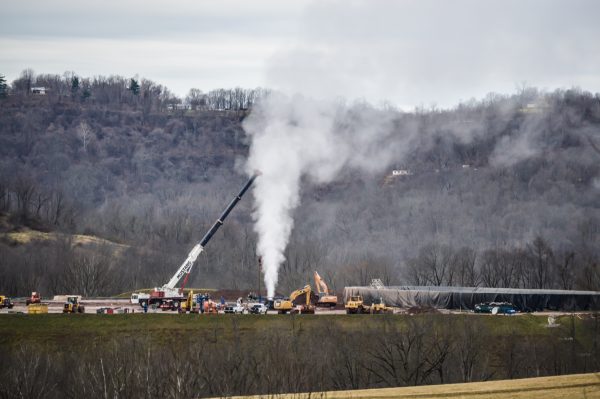
“There were a lot of different things coming out of that well during those 10 days,” said Dr. Ben Stout, and professor of biology at Wheeling Jesuit University. “Other than the natural gas, there were a lot of organic compounds that are associated with the Utica Shale.
“But no one really knows because this has never been done before,” he said. “And I think we really need a detailed study performed on this well pad so a lot of questions can be answered for everyone in this valley.
“But one thing is for sure, and that’s that this leaking well head was putting air into the atmosphere that no one should ever breathe into their lungs. No one should ever breathe air that they can see. No one in their right mind should ever expose themselves to that stuff.”
Stout has actively researched fracking since the industries arrived in Wetzel County in West Virginia in 2007, and that is because he remains concerned with the environmental impacts associated with the energy harvesting. He is frustrated by the exemptions given to the industries within the federal Energy Policy Act of 2005, and by the confidentiality agreements to which leaseholders must agree.
“The crux of the problem is that the public is not being told anything by anyone involved,” he said. “But it’s my opinion that the silence needs to stop so situations like this one in Monroe County does not become the norm up and down this valley.
“I find situations like this one to be pretty scary, especially since this is the first wave of these industries, but if people start talking about it, we can make the changes happen. That’s what I think needs to happen.”
Two guards were positioned at the entrance to the Stalder 3UH pad.
“I can’t tell you anything,” a female guard said before a question was even posed. “And there’s no way for you to get any closer than you are.”
Why not?
“Because you can’t. That’s all I can tell you.”
Was it a good job? Was she nervous? Was the male guard with whom she was working at least a little bit afraid? Did either one of them have any idea when the evacuated residents would be permitted to return home for good?
“They said it should be soon,” she said. “That’s all I can tell you.”
A second conversation with the female guard revealed little more. “You can try at the VFD. That’s where everyone meets,” she said. “Other than that, I’m not authorized to offer any more.”
Even her name?
“Nope.”
A placard in front of the VFD read, “COMMAND POST,” and a small sign on the entrance to the volunteer fire departments read, “NO ACCESS WITHOUT PERMISSION.” An EMT sitting in a running ambulance in the facility’s driveway attempted to assist, but she soon returned to say, “They say they are too busy right now to talk to the media.”
At that moment a young man exited the building, and he too attempted to assist, but to no avail. “They said they are in the middle of something. Do you have a number they can call?”
A business card was given, but a phone call never was received.
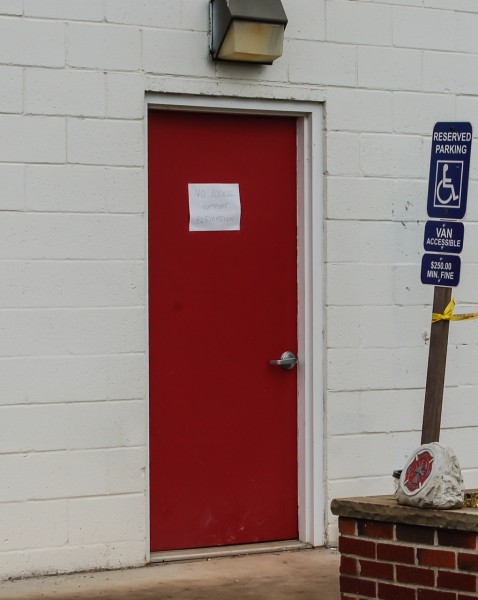
Could It Reach Us Here?
Hoping for a few last-minute tips before Christmas, Lyndsey was working as a server on Dec. 23 at Quinet’s Court Restaurant in New Martinsville, W.Va., a city of 5,300 residents situated directly across the Ohio River from Sardis.
She often asked non-regular customers, “What brings ya in?” And after learning of the leaking well head in Sardis, she posed another inquiry.
“Could it reach us here?”
It was an honest question for which there exists no known answer. The Stalder 3UH well pad thus far includes four fracked wells in all, and each has pathways full of natural gas. If worst-case scenario had played out, the extent – and reach – of the damage is an undefined variable.
“I’m just glad we didn’t find out,” said Vargo. “I hope we never find out those things because that would mean it happened. We know about the volatility of natural gas, and we know accidents have taken place. We just have to be prepared for them.
“In Ohio County, I believe we are very proactive as far as mapping pipelines, working with the companies and with the Department of Environmental Protection,” he said. “And the EMA departments throughout the valley work together so we can all keep pace with the industries.”
And then later during the day of Dec. 23, the 28 affected families in Sardis received the news they had been awaiting. Officials of parent-company Magnum Hunter Resources released the following statement on its website:
“Magnum Hunter Resources Corporation is reporting today that the previously announced blowout of the Company’s Utica Shale well, the Stalder 3UH, located in Monroe County, Ohio, which occurred on December 13, 2014, is now under control, and the well has been temporarily capped. Wild Well Control has successfully replaced the Stalder 3UH’s well head assembly. Due to the gas content being ~97% methane, there is currently no evidence of environmental damage to the immediate area as a result of the blowout. Additionally, no personnel have been injured in connection with the well control operations on the Stalder Pad.
“Initial well control operations involved excavation around the well head to properly evaluate the condition of the well head flange and night cap. Fresh water was continually sprayed on the well head to reduce the chance of ignition of the natural gas. Initially, attempts to push the night cap back over the flange with a track hoe and a crane were unsuccessful. Wild Well Control then began the process of replacing the well head assembly. As part of this process, the individual casing strings were cut in a number of different places. The new well head was then installed, and the well was shut in earlier today. The pad site will now be brought back to its original condition, and the Company anticipates that all wells on the Stalder Pad will be placed on production sometime in January 2015.”
Twelve days before Christmas, 28 families were chased from their lighted trees and their decorations, photo albums, jewelry boxes, gun vaults, and their own beds, and although “Connection Day” had been delayed for these Monroe County residents, they quickly moved back home for the holidays.
